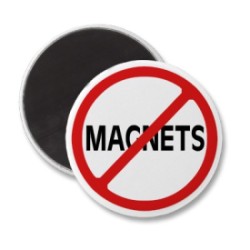 Smoke shaft systems are very effective solutions to ventilate lobbies and corridors in the case of fire. A ventilator is installed at each level of the building leading into the smoke shaft in order to evacuate the smoke. Many of the early smoke shaft systems rely on electro-magnets to hold the ventilator flap closed, rather than installing motorised ventilators.
Smoke shaft systems are very effective solutions to ventilate lobbies and corridors in the case of fire. A ventilator is installed at each level of the building leading into the smoke shaft in order to evacuate the smoke. Many of the early smoke shaft systems rely on electro-magnets to hold the ventilator flap closed, rather than installing motorised ventilators.
However, electro-magnets can release at the wrong time, introducing an element of unpredictability that is particularly ill suited to a smoke control system.
When can magnets misbehave?
• Loss of power:
If a power line experiences an outage, the magnets on all ventilators linked to it will release, so the flaps will open and stay open until they have been manually re-set. Ventilators with magnets cannot be re-set remotely, so if there is a fire before this is done manually, smoke could travel into floors free of fire. This is likely if all ventilators are controlled from one power source in any given shaft, and increases the likelihood of the fire spreading to the complete building.
• High temperatures:
Magnets are don’t cope very well with heat: the magnetic field of the magnet holding the flap closed is produced by electric current flowing through a coiled wire. As the temperature rises, the current drops and the magnetic field weakens: the magnet releases the flap open and, as above, smoke can travel to other floors and the risk of fire spreading through the building increases.
What is the solution?
Regulations on the design of smoke shafts have recently been tightened up in Approved Document B (ADB), and in residential buildings there is now a requirement for all shaft ventilators to be 30 minutes fire rated and smoke sealed, and for all ventilators on non-fire floors to remain closed.
However, if your building has a smoke shaft system with electro-magnets, we would suggest that you consider upgrading them to a safer system that doesn’t have such a high degree of unpredictability built into it.
If you want to know more on the subject, you can refer to the “Guidance on smoke control to common escape routes in apartment buildings” published by HEVAC Smoke Control Association and available from FETA. Alternatively if you want to contact me I will be happy to answer any questions you have on the subject.
 Conor Logan is a Technical Manager of Colt UK, Smoke and Climate Control Division. Conor is also Chairman of the Smoke Control Association.
Conor Logan is a Technical Manager of Colt UK, Smoke and Climate Control Division. Conor is also Chairman of the Smoke Control Association.

